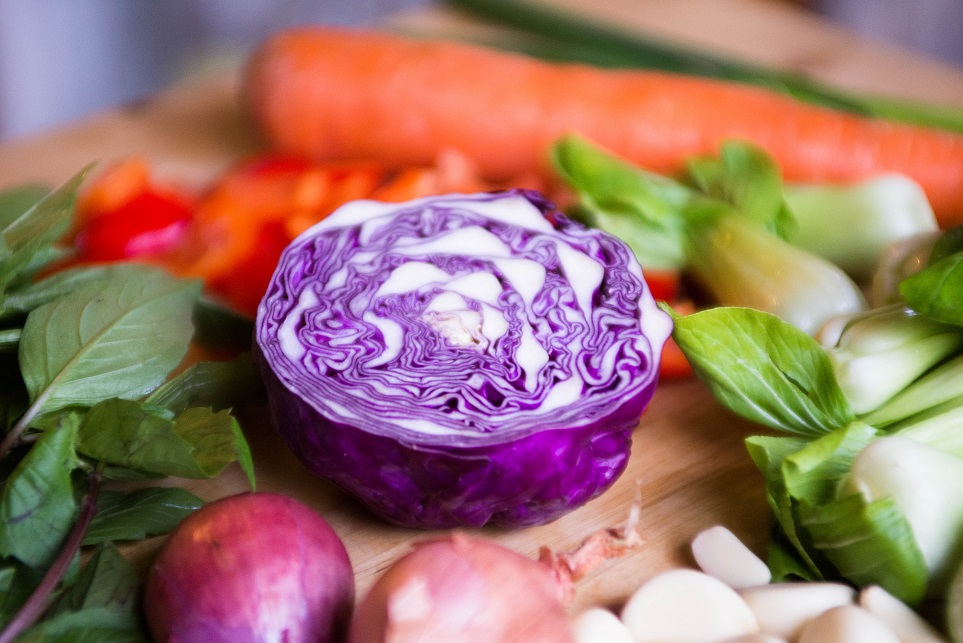We have all heard that eating veggies raw, or having a raw diet is beneficial, but some veggies just taste so much better when they are cooked! When veggies are cooked, the high heat compromises the molecular structure and drains them of the nutrients contained in them – and we don’t want that! Nutrients help to reduce free radicals, maintain cognitive function, and prevent blood clotting (which is why you probably heard it was better to eat them raw) but there are ways to cook your veggies and maximize nutrients. Follow these 10 tips when cooking vegetables to not miss out on nutritional goodness!
Use Less Water When Cooking
When you add lots of water when cooking veggies, you are draining the B vitamins that are water-soluble. These vitamins are essential for skin repair, bone maintenance, blood functionality and more. Using a combo of high heat + lots of water will increase the rate vitamin B leaves the veggie, and blends into the water (which you usually toss). Try to use less water, and find a way to incorporate the remaining water.
Boil For Shorter Periods of Time
Boiling your vegetables for a very long time does more than just make them all mushy. Letting your vegetables linger in boiling water will decrease the soluble protein, chlorophyll, and vitamin C more than other cooking methods will. Remember to set a timer so you don’t overcook your vegetables. Besides, no one wants to eat extra mushy green beans!
Steaming is the Best Way To Go
If you like to eat broccoli, then you’ll be happy to hear that steaming will actually preserve glucosinolate which is a bioactive nutrient that fights cancer. Steaming your veggies is the least impactful way of cooking since it increases digestibility with indirect heat. It lessens the impact of vitamin C’s vulnerability to heat, preserving the most nutrients after cooking.
Avoid Deep Frying
You can definitely use a little oil to fry veggies up, as long as you are not drowning them and deep-frying them. Depending on which veggie you’re cooking up, oil frying prevents lipid-soluble vitamins A, D, E, and K from leaving the vegetable in the presence of heat.
Choose the Right Type of Oil
Every type of cooking oil has a specific heat capacity that pairs with what you are making. For example; extra virgin olive oil (EVOO) can aid in nutrient absorption under low-medium cooking temperatures, while avocado oil can withstand higher temperatures. Make sure you select the right oil for the job to ensure that lipid-soluble vitamins remain in the dish.
Leave the Skin On!
The skin of veggies such as potatoes, carrots and eggplants contain fiber and phytonutrients help to nourish your body – so don’t peel em or toss em! When you peel off the skin, you are depreciating the amount of nutrient content while you cook. The layer of fibrous skin helps to deflect nutrient loss. If you don’t want to eat the skin – no worries, just peel it off after you’ve cooked.
Don’t Cut Vegetables After Cooking
Limit nutrient loss by implementing this simple tip; cut your veggies only after they have been cooked! Cutting them into smaller pieces before you cook them increases the surface area for the heat as well as water to extract and drain nutrients.
Grilling Veggies Wisely
Leaving food on the grill too long causes water to carry nutrients away from food. As a result, B-vitamins escape and can’t be consumed. If you like the smokey flavor you get when grilling vegetables, limit the time you leave them on the grill. Alternatively, eat more veggies to compensate for the lost vitamin B.
Only Microwave When Necessary
Many home cooks shun the microwave and label it a tool for the lazy, but as long as you aren’t heating up TV dinners to eat regularly, the microwave can be on your side and contribute to healthy eating. Studies show that microwaves limit heat application, which in turn allows the benefits to outweigh the costs. Using the microwave to warm up your food for 2-3 minutes can actually preserve more vitamin C than boiling food in the same amount of time.
Try to Avoid Reheating Food
Most meals are best enjoyed right after they’re made, but sometimes you will be left with leftovers. When you reheat food, it incurs additional nutrient loss because the first round of heat was already applied during the preparation process. This is not to say that you should never reheat foods, but it should only be done when needed. Alternatively, you can choose foods that can also be enjoyed and eaten when they are cold like chicken. Use leftover chicken and make a chicken salad for lunch the next day.

